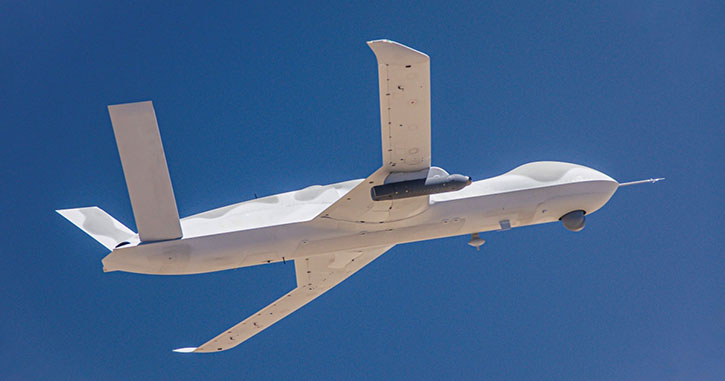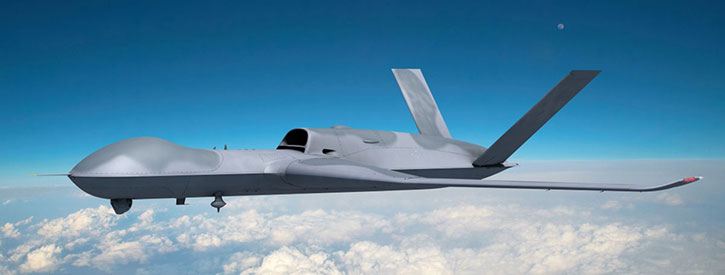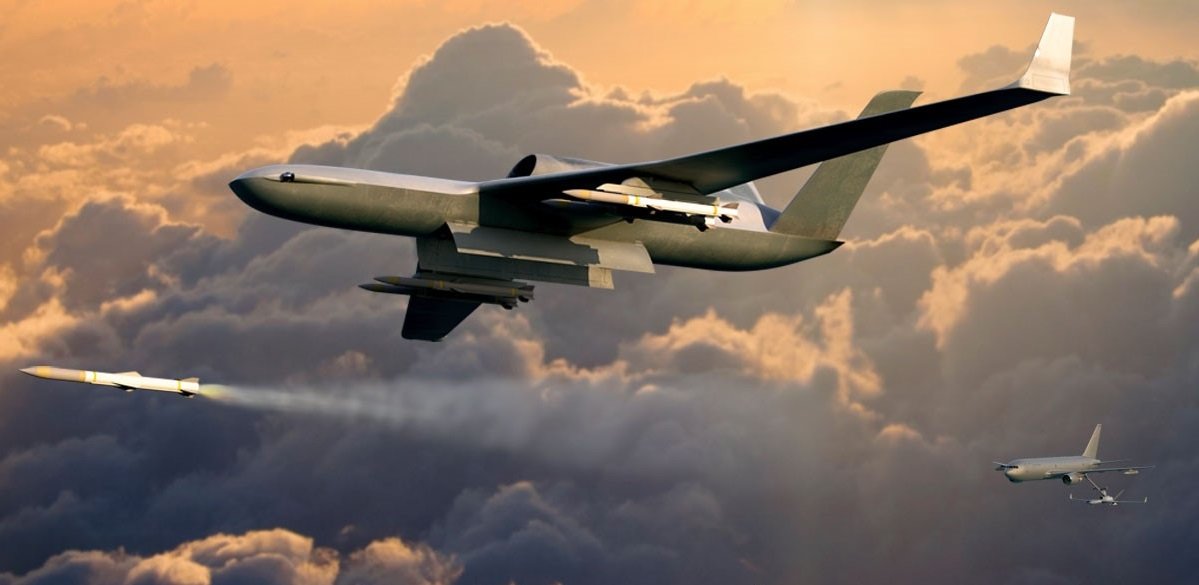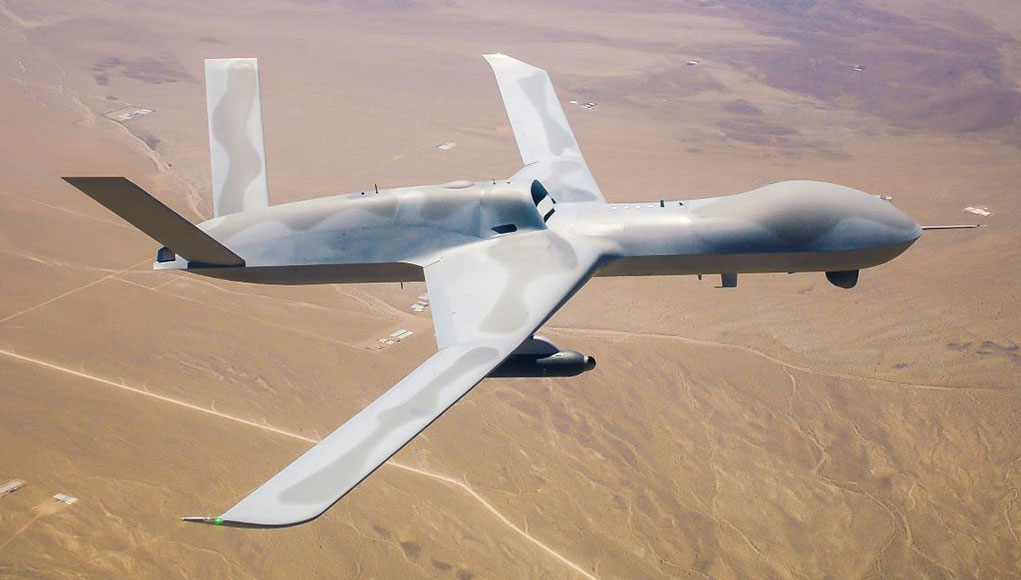General Atomics has recently conducted a flight demonstration of two Avenger unmanned aircraft systems (UAS), each equipped with Lockheed Martin’s Legion Pod IRST21, an Infra-Red Search & Track pod designed to detect aerial targets at long range, without using radar.
[playht_player width=”100%” height=”90px” voice=”en-US-JennyNeural”]
The information obtained by the pods was processed on board with advanced fusion software that blended the sensor data from both pods, and the Avengers streamed it to the ground station in real-time, delivering a situational air picture at the command center. “The Avenger with Legion Pod demonstrated how collaborative autonomous platforms with advanced sensing can deliver persistent, shared air domain awareness.” GA-ASI Senior Director of Advanced Programs Michael Atwood explained.
“This is the first time IRST systems on multiple autonomous aircraft have delivered merged air threat data to users on the ground,” Scott Roberson, director of Sensors and Global Sustainment Advanced Programs at Lockheed Martin, added. Lockheed Martin designed the Legion Pod to passively detect and track targets for tactical fighter pilots in radar-denied environments. This capability provides the data necessary to enable unmanned vehicles to track and engage hostile airborne targets without human intervention.

The fusion technology was previously tested in F-15Cs equipped with Legion Pods and datalinks deployed to the Northern Edge operational exercise in 2021, where the pods demonstrated their ability to detect and track targets of interest at long ranges autonomously. The Avenger autonomy flight test series began in December 2020 to demonstrate next-generation air-to-air applications of Unmanned Aerial Vehicles. The integration of the pod and the unmanned platform enables the drone to maneuver for optimized target engagement autonomously.
This capability brings drones one step closer to having autonomous systems that support manned-unmanned teaming (MUM-T) in joint all-domain operations. Carried on F-15Cs, Legion Pods have already demonstrated passive cueing of targets for AIM-120 and AIM-9X missile tests.
General Atomics MQ-20 Avengers N901PC & N903PC “SKYBORG01 & 03” arriving into El Mirage Field this afternoon, outfitted with Lockheed Martin Legion Pods. (October 26th, 2021). pic.twitter.com/Cqg5jXUVTR
— Aircraft Spots (@AircraftSpots) October 27, 2021
[playht_listen_button]
The sensor’s Open Mission System (OMS) design readily supports Joint All Domain Operations (JADC2) requirements for alternative datalink architectures. The OMS allows for rapid integration, making the technology transportable among aircraft platforms and reducing the timeline and complexity to integrate on new platforms. The fusion engine’s ability to take in multiple sensor sources makes it a central node that connects multiple Legion Pods on manned and unmanned platforms. Lockheed Martin has plans to test the Legion Pod with datalink capability among F-16s and F-15-to-F-16 sensor fusion.


Apart from this company-funded activity, GA-ASI is also involved in an Air Force demonstration program known as ‘Off-Board Sensing Stations’ (OBSS). This program calls for developing an unmanned platform that will operate alongside current or future fighters, provide sensor support, and perform as a ‘weapon bay’ under the command of the, thus keeping the manned aircraft in a quarterback position far from danger. Operating far forward and carrying IRST sensors, such OBSS drones could deliver situational pictures and provide passive cueing for long-range missiles launched from stand-off range. This capability will enable 5GEN and 4GEN fighters to engage low-observable (stealth) targets and launch missiles without activating their radars, thus denying the enemy any early warning.
General Atomics is one of two contractors developing such platforms; the other is Kratos Defense. In November 2021, both companies were awarded a $17.8 million contract from the Air Force Research Laboratory (AFRL) to design an OBSS aircraft. By year’s end, AFRL expects to select one of the designs and invest an additional $30 million to build and fly the new drone by 2024.




















